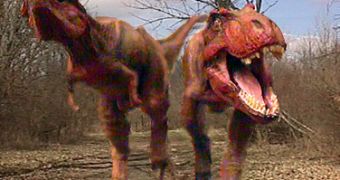Today's issue of the journal Science witnessed the publication of a new study stating that, all things considered, it is quite likely that dinosaurs became extinct as a result of a run-in with either a meteor, or a comet.
Currently, several researchers are still arguing over what is was exactly that caused these animals to fall off the biodiversity map, meaning that, while some suggest volcanic eruptions, others blame climate change. Furthermore, a third party points the finger at either a comet or an asteroid impact.
However, new evidence suggests that the last one might have had it right all along.
To cut a long story short, it looks like dinosaurs became extinct about 300,000 years earlier than previously thought, and that their demise occurred shortly after a well-known impact that took place roughly 66 million years ago.
Science News reports that, given the fact that these two dates find themselves so close to one another, it is highly unlikely that the two events were not in any way connected to one another.
As Paul Renne, the director of the Berkeley Geochronology Center and a University of California, Berkeley, puts it, “The impact was clearly the final straw that pushed Earth past the tipping point.”
“We have shown that these events are synchronous to withing a gnat's eyebrow, and therefore the impact clearly played a major role in extinctions, but it probably wasn't just the impact,” Paul Renne went on to add.
In order to reach these conclusions concerning how it was exactly that the dinosaurs became extinct, Paul Renne and his fellow researchers have collected and analyzed volcanic ash samples taken from a coal bed within a few centimeters of the dinosaur extinction horizon, the same source informs us.
This allowed them to review information concerning the dates when the impact and the dinosaurs' extinction took place.
“The new date for the impact – 66,038,000 years ago – is the same within error limits as the date of the extinction, making the event simultaneous,” Paul Renne commented with respect to his and his team's findings.
The Ann and Gordon Getty Foundation, the UC Berkeley's Esper S. Larsen Jr. Fund and the National Science Foundation all have offered their support to this research.

 14 DAY TRIAL //
14 DAY TRIAL //